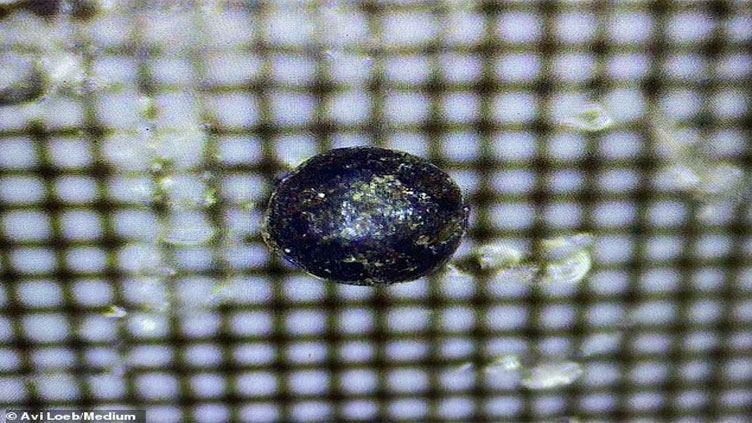First ever 'alien' objects found on earth

Technology
Harvard physicist says the found tiny fragments are from outside our solar system
(Web Desk) - Scientists claim they have recovered material that originated outside our solar system for the first time in history.
Alien-hunting Harvard physicist Professor Avi Loeb said early analysis of metal fragments his team recovered from the Pacific Ocean in June suggests they came from interstellar space.
The remnants came from a meteor-like object that crashed off the coast of Papua New Guinea in 2014, which Professor Loeb is not ruling out could have been fragments of an alien craft.
The team found about 700 tiny metallic spheres during the expedition, and the 57 analyzed contain compositions that do not match any natural or man-made alloys.
The findings do not yet answer whether the spheres are artificial or natural in origin - which Professor Loeb said is the next question his research aims to answer.
'This is a historic discovery because it represents the first time that humans put their hand on materials from a large object that arrived to Earth from outside the solar system, Professor Loeb said Tuesday.
Professor Loeb told DailyMail.com: 'I was thrilled when Stein Jacobsen reported to me about it based on the results in his laboratory.
'Stein is a highly conservative and professional geochemist with a worldwide reputation.
'He had no bias or agenda whatsoever and expected to find familiar spherules with solar system composition.
'But the data showed something new, never reported in the scientific literature. Science is guided by evidence.'
Professor Loeb also told DailyMail.com that future research would answer whether the fragments are simply part of a space rock or the debris of alien technology that has been floating through the cosmos for millennia.
'For now, we wanted to check whether the materials are from outside the solar system,' he said.
'The success of the expedition illustrates the value of taking risks in science despite all odds as an opportunity for discovering new knowledge.'
Loeb and his team published their study on the findings, which has yet to be peer-reviewed.
It states the fragments - known as spherules - appeared to be nested, suggesting that liquid drops engulfed smaller ones that solidified earlier.
And textures on surfaces of the round objects point to a rapid cooling.


